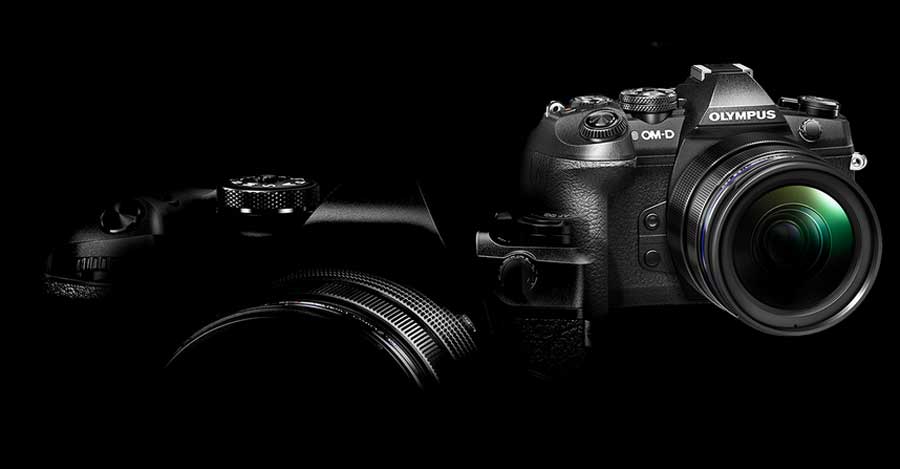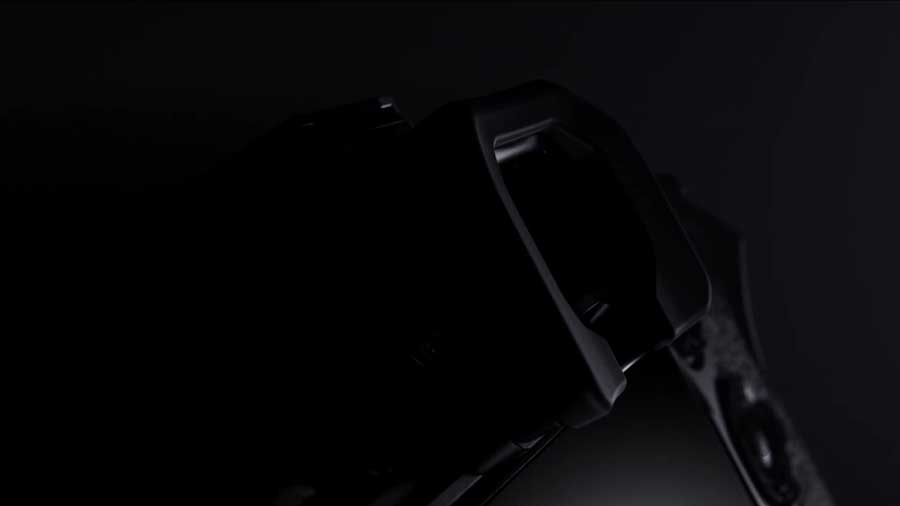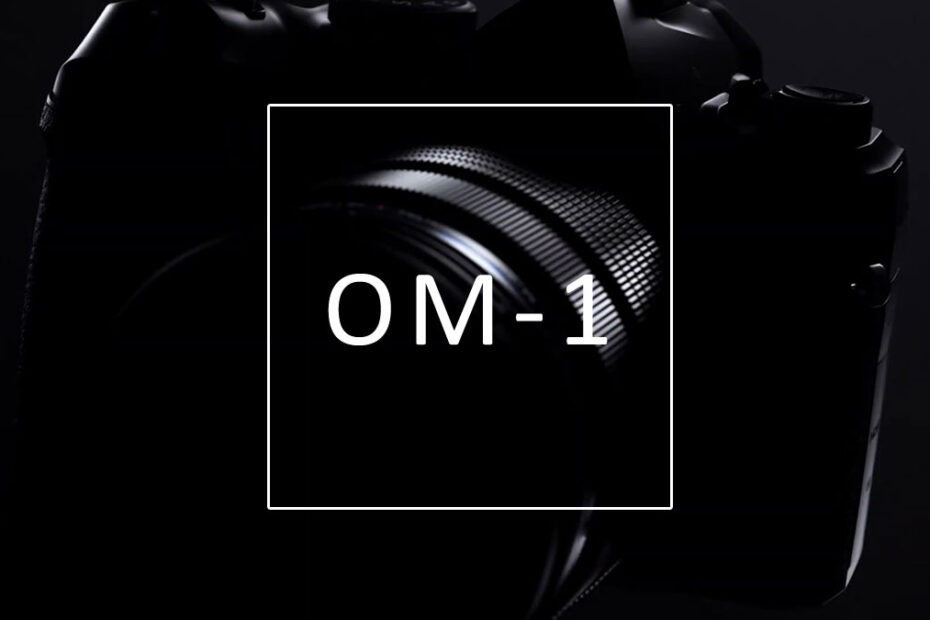The OM-1 is the second camera to appear under the post-Olympus OM-System brand. Although little is known at this stage, it appears the OM-1 will feature Sony Semiconductor’s 20-megapixel BSI Stacked CMOS sensor.
This is truly good news. For too long, Olympus owners have suffered the same dated FSI (front side illuminated) sensor. Given the new BSI (backside illumination) sensor is rumored to have a 2-stop advantage over the older sensor, it appears the wait was worth it. So, what else is new? Jump to Conclusion.
What is the OM-1
The OM-1 will be announced on February the 15th and appears to be the successor to the Olympus OM-D M1iii. Like the Nikon Z9 and Sony A1, the OM-1 features a backside-illuminated (BSI) sensor. As a result, the sensor receives more light leading to improved dynamic range and reduced noise at high ISOs.

Also, thanks to its new stacked architecture, the new sensor has a much faster read-out speed. According to Sony Semiconductor, the sensor is rated to capture 120 full-resolution photos per second. On one level, this means high continuous shooting rates, high frame rate video, and imperceivable rolling shutter.
But it also means the OM-1’s autofocus system gets to read the scene more often. As a result, the OM-1 should feature elite-level subject recognition and tracking; much like the Nikon Z9 and Sony A1.

OM1 vs Olympus OM-D M1III
The OM-1 is only fractionally larger than the Olympus OM-D M1iii. And whilst the OM-D M1iii suffered from a budget-grade 2.36M Dot electronic viewfinder, the OM1 gets 5.76M dots.
With its new sensor, the OM-1 will have higher frame rate video, better continuous shooting, and cleaner photos at higher ISOs.

OM-1 Specifications
OM1 specifications are unconfirmed but realistic.
| OM-1 | |
| Release Date | 15/02/2022 |
| Release Price | US$2000 |
| Sensor | |
| Sensor Size | Micro Four Thirds |
| Sensor Type | Stacked CMOS |
| Megapixels | 20.1 |
| ISO Range | 200-102400 |
| Autofocus | |
| AF Type | Hybrid Phase/Contrast Detect |
| AF Focus Points | 1053 |
| AF Sensitivity | ? |
| AF Coverage | ? |
| Shutter | |
| Max Shutter Speed | 1/8000 |
| Max Shutter FPS | 10 |
| Electronic Shutter | Yes |
| Max E-Shutter Speed | 1/32000 |
| Max E-Shutter FPS (Full Resolution) | 20 FPS |
| Max E-Shutter (Low Res) | 120 FPS |
| Silent Shooting | Yes |
| Metering | |
| Range | ? |
| In-body Image Stabilization | Yes |
| Rating | Up to 7 Stops |
| Video Quality | |
| 8K | N/A |
| 4K | 60p |
| HD 1080p | 60p |
| Max. Recording Time | ? |
| Format | ? |
| Output over HDMI | ? |
| Video Compression | |
| Apple ProRes 422 HQ | ? |
| H.265 HEVC | Yes |
| H.264 AVC | ? |
| Time Lapse | ? |
| File Format | |
| JPEG | ? |
| Raw | ? |
| Storage | |
| Card Slot 1 | SD UHS-2 |
| Card Slot 2 | SD UHS-2 |
| Viewfinder | |
| Type | ? |
| Resolution | 5.76M Dots |
| Refresh Rate | ? |
| Magnification | 0.74 – 0.82 |
| Diaopter | ? |
| Eye Sensor | ? |
| Blackout | ? |
| Display | |
| Size | 3.0 inch |
| Resolution | 1.62m Dots |
| Touch Sensitive | Yes |
| Articulation | Fully Articulated |
| Connectivity | |
| Video-Out | HDMI D |
| Audio In (mic) | 3.5mm Audio Jack |
| Audio Out (Headphones) | 3.5mm Audio Jack |
| Data | USB-C 3.0 |
| Power | USB-C 3.0 |
| Ethernet Port | No |
| WiFi | Yes |
| Bluetooth | Bluetooth 4.2 LE |
| Internal GPS | ? |
| Power | |
| Battery | BLX |
| Battery Life | Approx: 520 Shots |
| Video Record Time | ? |
| Weight & Dimensions | |
| Width | 134.8mm |
| Height | 91.6mm |
| Depth | 72.7mm |
| Weight | 599g |
Conclusion
If the rumors are true, the OM-1 looks promising indeed. The Olympus OM-D M1iii was a strange camera. With features such as LiveND, Starry AF, and insanely good image stabilization – the Olympus OM-D M1iii was no stranger to innovation.

But at the same time, it suffered an ancient sensor and an economy-class electronic viewfinder – two fundamental features that cannot be overlooked. Especially considering the M1iii’s price.
But as someone who has some measure of full-frame fatigue, I still loved the OM-D M1iii and the Micro Four Thirds concept in general.
But with the OM-1’s high-resolution viewfinder and Stacked Sensor, the OM-D M1’s flaws have been addressed. Therefore, I can now revisit the prospect of owning a high-performance camera system that I’m happy to haul up the side of a mountain.
Finally, the OM1 proves is that there’s still plenty of life in Micro Four Thirds. And that will come as no surprise to many.
Recent Posts
- Aperty – Dedicated AI-Powered Portrait Enhancement
- ON1 Photo Raw 2024.5 Review – A little Unfriendly, Very Rewarding
- Topaz Photo AI Review – Excellence in Slow Motion
- Gigapixel Review – Is it Fixed?
- Best Noise Reduction Software 2024 – 8 Denoisers Ranked
- ON1 NoNoise AI 2024 Review – Outstanding and Affordable





